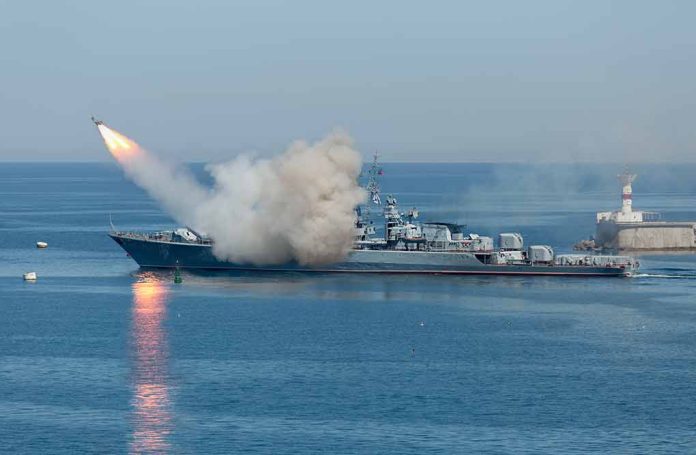
Britain’s massive £15 billion nuclear arsenal expansion signals a dramatic shift to “war readiness” as Russia’s aggression reaches new heights.
Key Takeaways
- UK plans to build up to 12 new nuclear-powered attack submarines and invest £15 billion in new nuclear warheads amid rising Russian threats
- The defence review includes 62 recommendations including new munitions factories, a stockpile of long-range weapons, and a new cyber command
- Nuclear investments are expected to support 30,000 highly skilled jobs across the UK
- Plans to increase army size won’t take effect until after 2029, raising questions about immediate readiness
- Critics doubt Labour’s ability to fund defence promises and reach 3% of GDP spending target by 2034
Nuclear Submarine Fleet Expansion
Britain is preparing to significantly bolster its naval capabilities with plans to build up to 12 new nuclear-powered attack submarines as part of a comprehensive defense overhaul. The Ministry of Defence will commit £15 billion to developing new warheads for the UK’s nuclear deterrent, representing one of the largest investments in British defense infrastructure in decades. This strategic pivot comes as a direct response to escalating global threats, particularly from Russia, whose aggressive actions in Ukraine and beyond have destabilized European security and prompted Western powers to reassess their military readiness.
The submarine expansion builds upon the existing Astute-class fleet, which currently consists of five vessels and is expected to grow to seven by next year. These advanced submarines will enhance Britain’s ability to project power globally while supporting the “AUKUS” partnership with the United States and Australia. The nuclear investments are not merely about military capability but also represent a significant economic stimulus, with projections indicating the creation or maintenance of approximately 30,000 highly skilled jobs throughout the United Kingdom’s defense industrial base.
Strategic Defence Review
The comprehensive defence review, spearheaded by Prime Minister Starmer, outlines a “radical blueprint” for transforming Britain’s military posture. With 62 specific recommendations, the review signals a fundamental shift toward “war readiness” – a stark acknowledgment that the post-Cold War peace dividend has evaporated amid rising geopolitical tensions. Central to this new posture is the establishment of multiple munitions factories, development of advanced cyber command capabilities, and creation of substantial stockpiles of long-range precision weapons to ensure sustained combat operations if needed.
The strategic reassessment comes in direct response to Russia’s increasingly hostile actions, including not only conventional military threats but also sophisticated cyber warfare campaigns. Defence officials have linked over 90,000 cyber assaults to various state actors, with Russia leading these digital offensives. The review also allocates £1.5 billion to upgrade military housing, addressing a long-standing issue affecting morale and readiness among service personnel and their families, who have endured substandard living conditions despite their critical role in national security.
Financial and Implementation Challenges
Despite the ambitious scope of Britain’s defense revitalization, significant questions remain about funding mechanisms and implementation timelines. The Labour government has committed to reaching defense spending of 3% of GDP by 2034, a substantial increase from current levels. However, critics have expressed skepticism about the financial viability of these plans, particularly given ongoing economic pressures and competing budget priorities. The delayed timeline for army expansion, which won’t begin until after 2029, has also raised concerns about immediate readiness gaps during a period of heightened international tension.
Opposition parties have called for cross-party talks to ensure long-term funding commitments survive potential changes in government, emphasizing the need for national consensus on defense priorities. Military experts note that while the nuclear and technological investments are vital, conventional force readiness remains equally important, particularly as Russia continues its aggressive posturing in Eastern Europe. The defense industrial base will require sustained investment and policy support to rebuild capacity after decades of contraction, presenting both an economic opportunity and a significant challenge for implementation.





